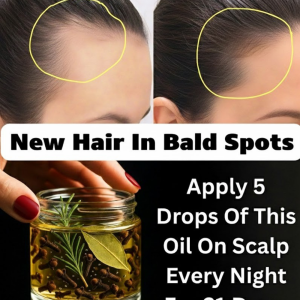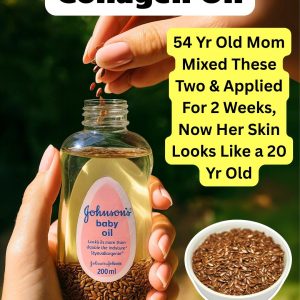
This guide explores the remarkable power of everyday seeds to protect your vision and retina naturally. Each of these tiny nutritional powerhouses targets a different piece of the eye-health puzzle, combining to form a comprehensive shield.
7. Fenugreek: Your First Line of Defense Against Sugar Spikes
Fenugreek also contains lutein—a yellow pigment concentrated in the macula (the most sensitive part of the retina). Lutein acts as an internal filter against harmful blue light from screens and sunlight. While many rely on synthetic supplements, a simple bag of fenugreek seeds can deliver comparable benefits for months, backed by both ancient wisdom and modern science.
Preparation tip: Soak one teaspoon of fenugreek seeds overnight in water, then drink the golden-colored water first thing in the morning. This helps moderate glucose spikes and supports healthy vision.
6. Pumpkin Seeds: The Zinc Powerhouse for Your Eyes

If your eyes feel dry or you need brighter light to read, a deficiency in zinc might be the culprit. Pumpkin seeds are one of nature’s richest sources of this essential mineral.
Zinc acts as a “delivery service” for vitamin A, helping transport it from your liver to your eye tissues. Without sufficient zinc, vitamin A can’t do its job effectively. Pumpkin seeds also provide vitamin E and lutein, forming a synergistic trio shown in studies to slow macular degeneration by up to 25%.
How to use: Consume pumpkin seeds raw to preserve their vitamin E content. Carry a small pouch for snacking or sprinkle them over salads. Chew them thoroughly to unlock their nutrients.
Processed Seed Products: A Hidden Threat
Many commercial “healthy” snacks—such as cereal bars, granola mixes, or seeded crackers—market themselves as nutritious but often do more harm than good. A closer look at the ingredients reveals that sugar, glucose syrup, or maltodextrin often appear near the top of the list, while seeds appear near the end.
A single “healthy” bar may contain up to 30 g of sugar and just 2 g of seeds. That sugar surge promotes glycation in the eyes, damaging lens proteins and weakening delicate retinal blood vessels.
5. Chia Seeds: A Dual Shield for Retina and Blood Sugar
Chia seeds uniquely stabilize glucose levels while rebuilding retinal structure. Their alpha-linolenic acid (ALA), a plant-based omega-3, converts into DHA—the structural fat that keeps retinal cells flexible and responsive.
How to use: Always “activate” chia by soaking one tablespoon in water or plant milk for at least 20 minutes (or overnight) before eating. This turns them into a gel rich in omega-3s, fiber, and antioxidants.
4. Fennel Seeds: Soothing Inflammation and Improving Tear Quality

Beyond aiding digestion, fennel seeds reduce inflammation and support healthy tear production. Their flavonoids—quercetin and kaempferol—act as anti-inflammatory agents that protect delicate eye tissues. Vitamin C in fennel strengthens capillary walls, while its essential oil, anethole, stimulates tear glands to produce better-quality tears.
How to use: Lightly crush one teaspoon of fennel seeds, pour hot water over them, and steep for 10 minutes. Drink this infusion twice daily to relieve eye fatigue and inflammation. You can also chew half a teaspoon after meals or mix ground seeds into smoothies.
3. Sunflower Seeds: Go Raw, Go Unsalted
Sunflower seeds are rich in vitamin E, which protects the macula from oxidative stress. However, roasting or salting them drastically reduces their benefits. Heat destroys up to 80% of vitamin E, and excess sodium can raise intraocular pressure.
Recommendation: Choose raw, unsalted sunflower seeds. A small handful daily provides ample antioxidants and helps reduce inflammation, supporting long-term eye protection.
2. Nigella Seeds (Black Cumin): Protecting the Optic Nerve
Nigella seeds, or black cumin, contain more than 100 active compounds—chief among them thymoquinone, which safeguards the optic nerve and retina from oxidative stress.
Thymoquinone also increases nitric oxide production, improving blood flow to the eyes and enhancing nutrient delivery.
How to use: Chew half a teaspoon of seeds on an empty stomach or steep lightly toasted, ground seeds in hot water for 10 minutes to make an infusion. Pairing Nigella with raw sunflower seeds can amplify their antioxidant effects.
1. Flax Seeds: The Queen of Eye Health
Flax seeds are the richest plant source of ALA omega-3 fatty acids, vital for maintaining the structure and function of your retina. They reduce inflammation, lower blood pressure, and improve circulation, ensuring your eyes receive adequate oxygen and nutrients.
Two tablespoons of freshly ground flax per day—added to yogurt, smoothies, or salads—provide a reliable, cost-effective way to support retinal repair and overall eye health.
Building a Strategic, Eye-Protecting Breakfast

Combine these seeds into a daily meal to maximize their synergy:
- Base: plain plant-based yogurt or kefir (healthy fats improve nutrient absorption)
- Add 1 tablespoon ground flax seeds for retinal repair
- Stir in pre-soaked chia gel for blood sugar control
- Sprinkle 1 teaspoon Nigella seeds for optic nerve support
- Include your morning fenugreek water for glucose regulation
- Top with raw sunflower or pumpkin seeds for zinc and vitamin E
This combination nourishes every layer of your visual system: improving circulation, reducing inflammation, supporting nerve function, and shielding against blue-light damage.
Conclusion
Protecting your eyesight doesn’t require expensive supplements or invasive treatments. With the right mix of natural seeds—and proper preparation—you can build a powerful, daily defense for your eyes. Consistency matters more than perfection; each small habit compounds over time.
Your vision’s longevity may depend less on what you buy in a pharmacy and more on what you sprinkle into your breakfast bowl.




